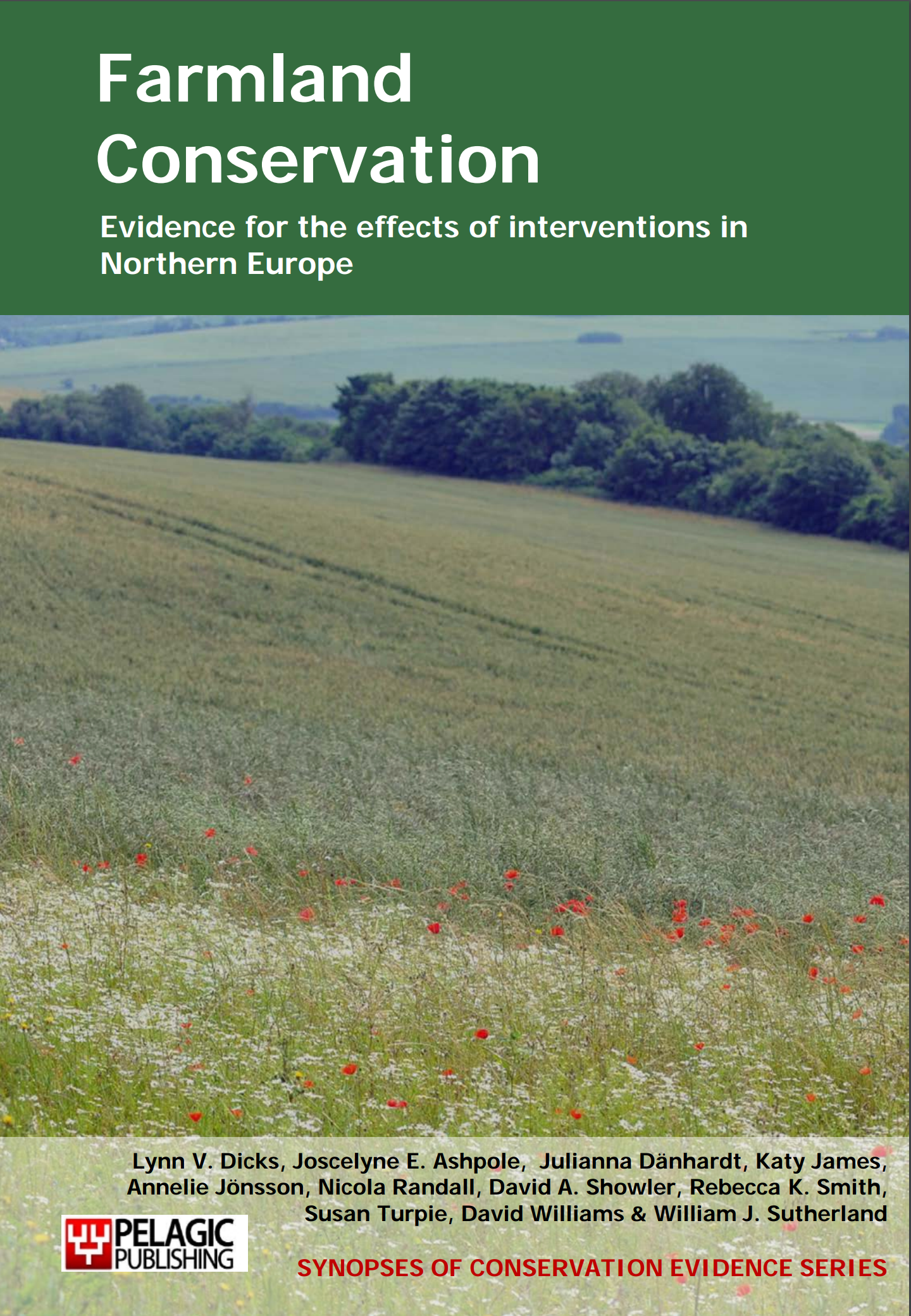Actions to conserve biodiversity
We have summarised evidence from the scientific literature about the effects of actions to conserve wildlife and ecosystems.
Review the evidence from the studies
Not sure what Actions are? Read a brief description.
Search for evidence
e.g. "frogs chytrid"
119 Actions found
Refine
Hide
119 Actions found
Download Actions
| 0 selected |
|
Order results by:
| Action | Effectiveness | Studies | Category | |
|---|---|---|---|---|
|
Add yellow rattle seed Rhinanthus minor to hay meadows Action Link |
Unknown effectiveness (limited evidence) | 2 |
|
|
|
Apply 'cross compliance' environmental standards linked to all subsidy payments Action Link |
No evidence found (no assessment) | 0 |
|
|
|
Avoid use of lead shot Action Link |
No evidence found (no assessment) | 0 |
|
|
|
Buffer in-field ponds Action Link |
No evidence found (no assessment) | 0 |
|
|
|
Connect areas of natural or semi-natural habitat Action Link |
Unknown effectiveness (limited evidence) | 5 |
|
|
|
Control bracken Action Link |
Evidence not assessed | 2 |
|
|
|
Control grey squirrels Action Link |
No evidence found (no assessment) | 0 |
|
|
|
Control invasive non-native plants on farmland (such as Himalayan Balsam, Japanese knotweed) Action Link |
Evidence not assessed | 2 |
|
|
|
Control mink Action Link |
Evidence not assessed | 2 |
|
|
|
Control predatory mammals and birds (foxes, crows, stoats and weasels) Action Link |
Likely to be beneficial | 11 |
|
|
|
Control scrub Action Link |
Unknown effectiveness (limited evidence) | 1 |
|
|
|
Control weeds without damaging other plants in conservation areas Action Link |
Unknown effectiveness (limited evidence) | 12 |
|
|
|
Convert or revert arable land to permanent grassland Action Link |
Unknown effectiveness (limited evidence) | 8 |
|
|
|
Create beetle banks Action Link |
Likely to be beneficial | 24 |
|
|
|
Create corn bunting plots Action Link |
No evidence found (no assessment) | 0 |
|
|
|
Create open patches or strips in permanent grassland Action Link |
Evidence not assessed | 2 |
|
|
|
Create rotational grass or clover leys Action Link |
Unknown effectiveness (limited evidence) | 3 |
|
|
|
Create scrapes and pools Action Link |
Unknown effectiveness (limited evidence) | 6 |
|
|
|
Create skylark plots Action Link |
Beneficial | 11 |
|
|
|
Create uncultivated margins around intensive arable or pasture fields Action Link |
Beneficial | 49 |
|
|
|
Delay mowing or first grazing date on pasture or grassland Action Link |
Likely to be beneficial | 15 |
|
|
|
Employ areas of semi-natural habitat for rough grazing (includes salt marsh, lowland heath, bog, fen) Action Link |
Unknown effectiveness (limited evidence) | 8 |
|
|
|
Enforce legislation to protect birds against persecution Action Link |
Unknown effectiveness (limited evidence) | 2 |
|
|
|
Erect predator-proof fencing around important breeding sites for waders Action Link |
No evidence found (no assessment) | 0 |
|
|
|
Exclude livestock from semi-natural habitat (including woodland) Action Link |
Unknown effectiveness (limited evidence) | 8 |
|
Download Actions
| 0 selected |
|

Farmland Conservation - Published 2013
Farmland Synopsis
Watch this search
If you are familiar with RSS feeds, please click the button below to retrieve the feed URL:
RSS feed for this searchIf you are unfamiliar with RSS feeds, we would suggest reading this BBC article.
Unfortunately, due to the number of feeds we have available, we cannot provide e-mail updates. However, you could use tools such as Feed My Inbox to do this for you.
What are 'Individual studies' and 'Actions'?
Individual studies
An individual study is a summary of a specific scientific study, usually taken from a scientific journal, but also from other resources such as reports. It tells you the background context, the action(s) taken and their consequences.
If you want more detail please look at the original reference.
Actions
Each action page focuses on a particular action you could take to benefit wildlife or ecosystems.
It contains brief (150-200 word) descriptions of relevant studies (context, action(s) taken and their consequences) and one or more key messages.
Key messages show the extent and main conclusions of the available evidence. Using links within key messages, you can look at the paragraphs describing each study to get more detail. Each paragraph allows you to assess the quality of the evidence and how relevant it is to your situation.
Where we found no evidence, we have been unable to assess whether or not an intervention is effective or has any harmful impacts.





)_2023.JPG)














